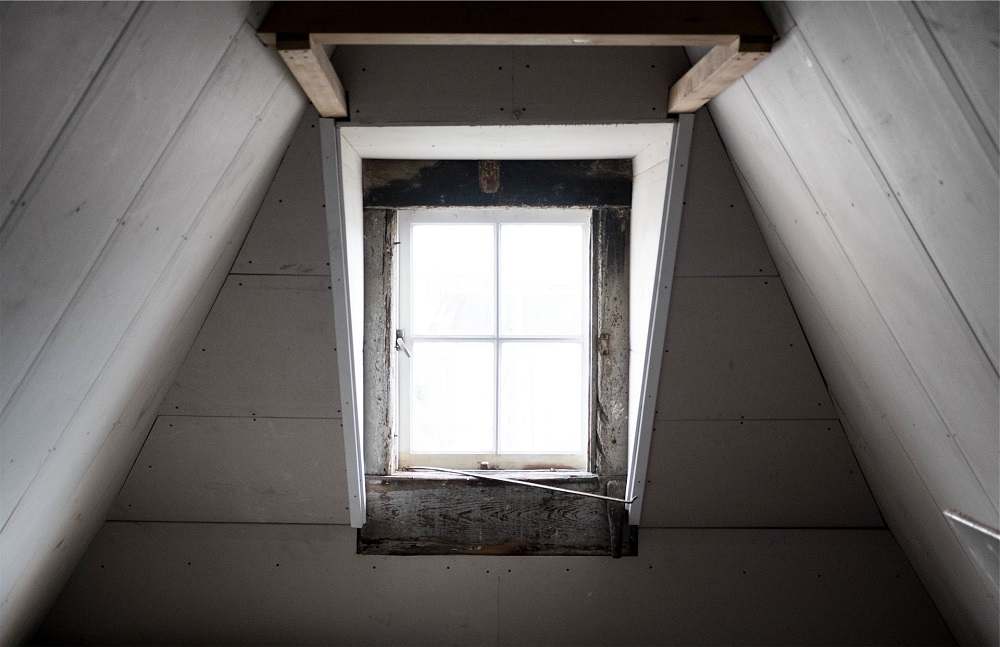Attic mold is a common problem within the Midwest. Especially within the Kansas City metro area where we have such drastic weather changes throughout the year. Attic mold can take on many types of mold. But one of the most common is black mold in attics. You have probably heard of the dangers of black mold. But why would it matter if it is in the attic?
Why Attic Mold Can Thrive
Attic mold can grow and thrive in most attics. Attics many times create the perfect moisture, temperature, and food source for mold to thrive. There are many different contributing factors to black mold in attics. Some of the most common reasons are inadequate insulation depth, water damage, roof leaks, and insufficient airflow. Due to a blocked or insufficient number of air vents.
Guidelines When there is Black Mold in Attics
There are many opinions about mold, its toxicity and how to remove it. The common response of general contractors is to simply rip it out, that it is not a problem. Then you have the other extreme of mold professionals that use fear tactics to make their point. At FreshStart, we desire to obtain a middle ground position whenever we can. We follow and recommend the guidelines issued by the EPA due to their endless hours and resources to properly study the effects of mold exposure and precautions to use during remediation. Mold is toxic and it should not be breathed! With recent studies by many medical institutions and professionals are legitimizing this claim and realizing there are many chronic illnesses and ailments that are being connected to mold.
Why a Resolution is Required
The immediate and primary concern with mold in the attic is when there are air ducts running through the attic. These air ducts are not sealed tight. The ability to mold spores to enter the ductwork and then circulate mold spores throughout the home is high. Even in attics that do not have ductwork, you still have vent pipes, plumbing lines, etc. That all create an “air access point” for toxic mold to affect other areas of the home.
Myths vs. Facts about Attic Mold
First, let’s go through the following list of MYTHS that are commonly heard:
- If you can’t smell or see mold then there isn’t any mold present
- Any size can be done by anyone or DIY
- Mold removal suits and protocols are overkill and not needed for health or safety
- Mold can be killed with bleach
- Spores cannot affect the air quality if it is painted over with Kilz
Now, moving on to some REAL FACTS about attic mold;
- Often hidden in dark, undisturbed place
- Can be toxic and can create serious health effects or illnesses
- Mold symptoms vary from person to person
- Needs to be removed by a professional if over 10 sq. feet by EPA
- ALL types of mold become toxic in a short amount of time
Mold Inspections during Home Purchases
We have worked with many new homebuyers who purchased their property without knowing that there was a mold problem in the attic. Many times inspectors do not thoroughly inspect the attic or they are not trained or experienced to recognize mold damage when they see it. Attics can produce the perfect environment for mold to thrive. Mold needs moisture and humidity, warm temperatures, darkness and food (organic materials) to thrive.
Most of the attics we have seen in our area do not have an adequate amount of insulation as recommended by Energy Star. Thus causing heat to escape from the home during winter months and extreme heat conditions during the summer months. In addition, proper insulation requires careful attention is made to ensure that vents are not blocked and that there is an adequate number of vents to provide the proper airflow needed in the attic. An insufficient amount of insulation can also lead to problems with ice dams, which are the most common cause of roof leaks in the winter.
This is why we recommend that when you are purchasing your home or looking to make efficiency improvements to speak with one of our mold professionals. If you are in the midst of purchasing a new home, we can provide detailed mold inspection and look for things that your home inspector may be missing.
The Attic is the Most Commonly Overlooked Area by Home Inspectors
Even home inspectors are known for ignoring attics during their inspections. Why we recommend mold inspections whenever you are in the process of buying or selling your home. In addition, the dark environment of an attic makes it a common reason for home inspectors to dismiss mold discoloration as dirt. This is where a certified, trained and experienced mold professional knows the difference between mold and dirty surfaces. Attics just need a thorough and detailed inspection. But most of the time, it doesn’t happen even when you hire a professional home inspector.
